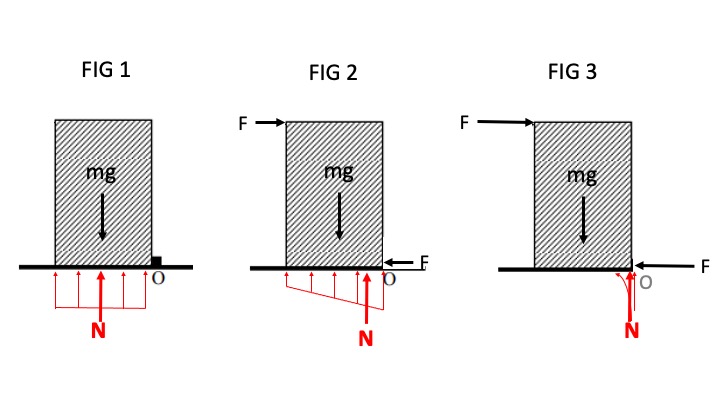The question exactly is:
A $20 \text{ kg}$ uniform density wooden crate of height $2 \text{ m}$ and width $1 \text{ m}$ is pushed at one of its edges at its top by a $25 \text{ N}$ force as shown in the figure. The force is horizontal and perpendicular to the edge of the crate. Will the crate be tilted? (The obstacle at O hinders the slipping of the block.)
So here's my train of thought:
G (200N) pulls down the body, N (-G = -200N) is the constraint force. If this wasn't there the body would fall down which doesn't happen. F' (= -F = 25N) prevents the block from slipping.
If the body was at rest, the sum of forces should be 0 plus the sum of torques should also be 0. The sum of forces is 0, that is for sure.
The sum of torques is what I have problems with. I choose point O as the pivot point. But then the torque of F is the only torque that would act on the body (since G is counterclockwise and N is clockwise and their magnitude is equal). But then that would mean that no matter how little force I exert on the body, it would tilt no matter what which is obviously not the case.
Could you tell me what I get wrong?



